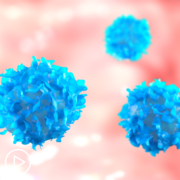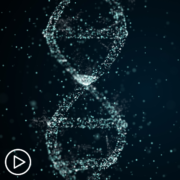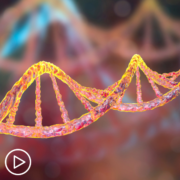What’s Next in Myeloma Research and Treatment?
What’s Next in Myeloma Research and Treatment? from Patient Empowerment Network on Vimeo.
What are the next generation myeloma therapies? Dr. Krina Patel shares an update on new agents, such as CelMoDs, and discusses how combination treatment and sequencing of therapy will evolve in the future of myeloma care.
Dr. Krina Patel is an Associate Professor in the Department of Lymphoma/Myeloma at The University of Texas MD Anderson Cancer Center in Houston, Texas. Dr. Patel is involved in research and cares for patients with multiple myeloma. Learn more about Dr. Patel.
Related Resources:

|

Evolving Myeloma Treatment Options | Bispecific Antibody Therapy |

|
Transcript:
Katherine:
Dr. Patel, for the last few years advances in myeloma treatment have been focused on the cellular therapies like CAR T. Can you share what’s next in myeloma research and treatment?
Dr. Krina Patel:
Yes, I think it’s been really exciting. The last 10, 15 years, really, we’ve just catapulted in the whole world of immunotherapies; so, from monoclonal antibodies to even IMids and CelMoDs and things that we’ll talk about a little bit now, and cell therapy as well as just other ways of engaging T-cells with the bispecific therapies too. So, I think what’s really exciting, that we have not just new mechanism of action that’s coming down the road but new targets.
So, again, coming back to really the big stuff like immunotherapy that I really like a lot and what I really am excited about, we have different ways of using the immune cells to help fight myeloma.
And so, things like IMids, lenalidomide, and pomalidomide that are older drugs that we’ve had since 2006, but really there’s newer ones called CelMoDs that are coming out that are being evaluated in clinical trials. One is called iberdomide. Another is called mezigdomide.
So, we’re really excited about this really in combination therapy, just like the prior iMids were used. And what it really does is it improves your immune system; it activates it to a point where things like monoclonal antibodies, such as daratumumab or isatuximab or elotuzumab, can work better in synergy.
But even new trials with some of our CAR Ts that we already have available, the BCMA therapies, combining it with these to see if we can make those T-cells work better.
So, once you get the CAR T-cell infusion, can we give some of these therapies now to improve how long it lasts, how well they work. And the same thing with the bispecifics.
These are therapies that are using the T-cells that are already in your body. Can we combine it with some of these of other immune therapies that will help the T-cells already there get activated, and then the bispecific takes them to the myeloma to really get treated. And I think those combination studies that are coming down are really, really exciting. And then, I think the new antigens, as I mentioned, not just BCMA therapy but we have GPRC5D and we have something called FcRH5.
And to my patients, I say it’s alphabet and number soup basically but they’re really targets for myeloma that we’re finding. It’s pretty amazing, considering that we didn’t have a target for the longest time, like lymphoma when they had their CD19 and we were jealous. And now we’re finding all these targets and now we’re figuring out how do we combine different mechanism of action for different targets so that we can hopefully kill every last myeloma cell.










